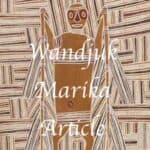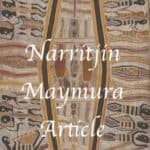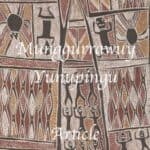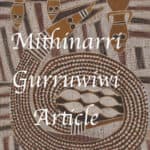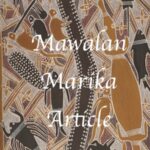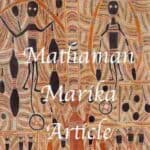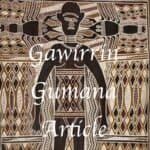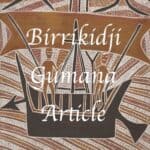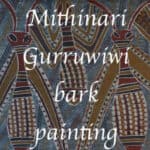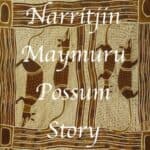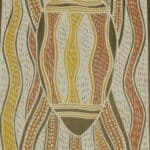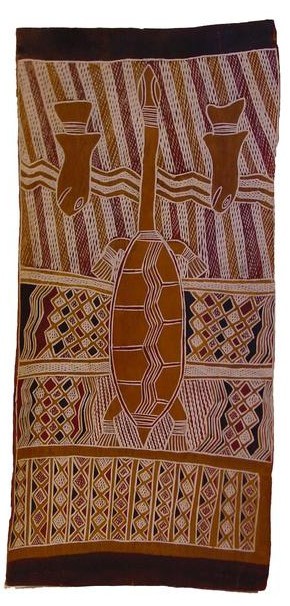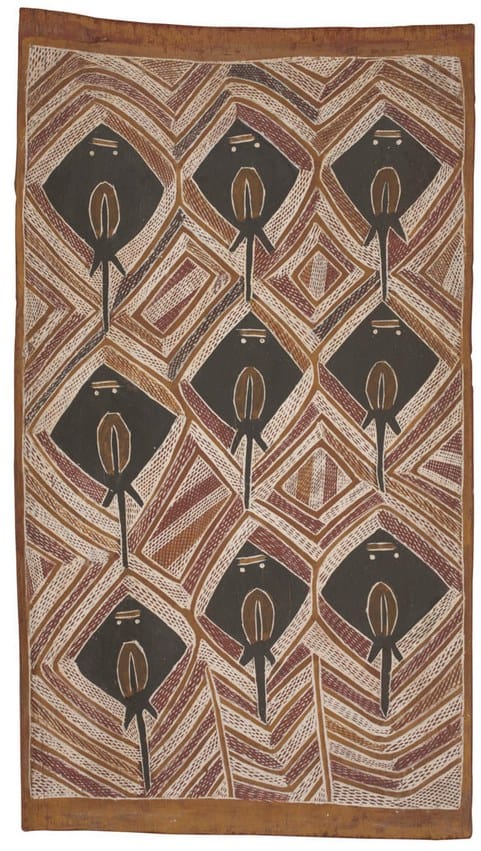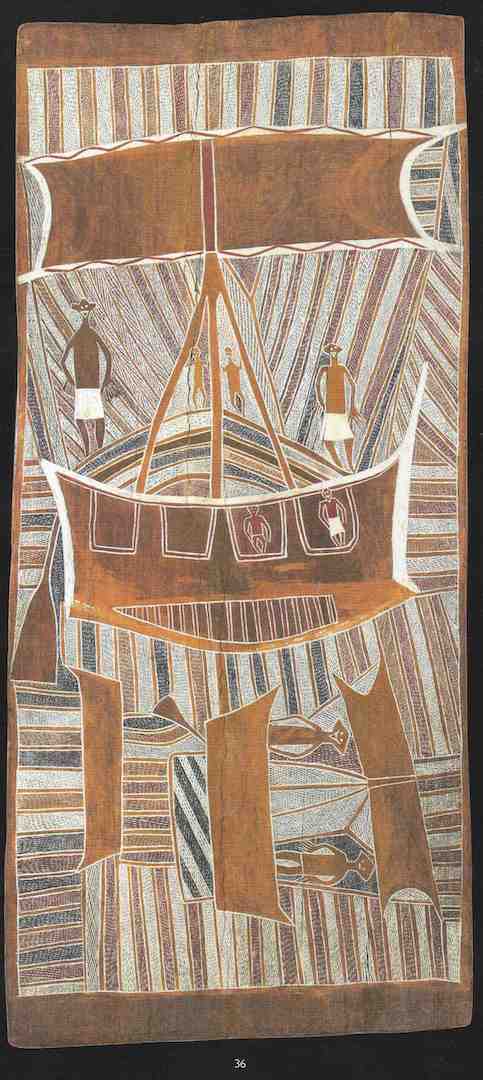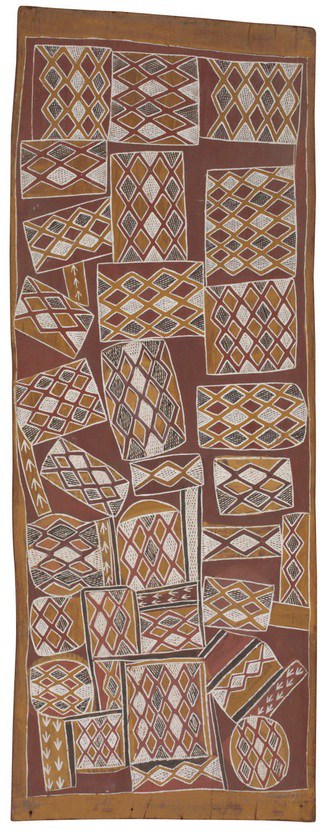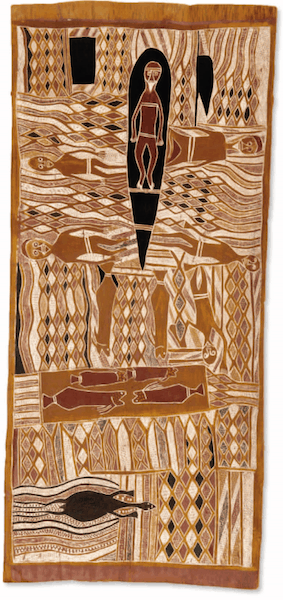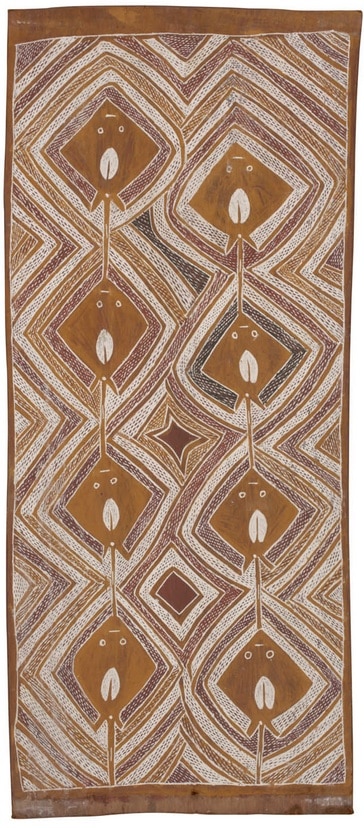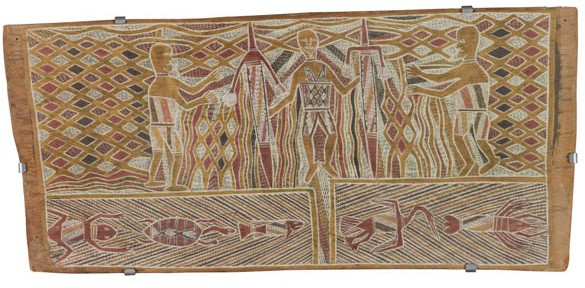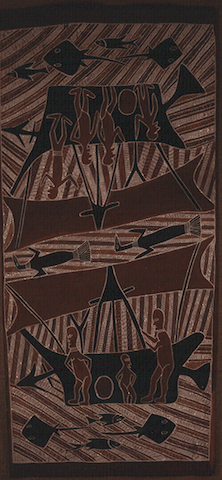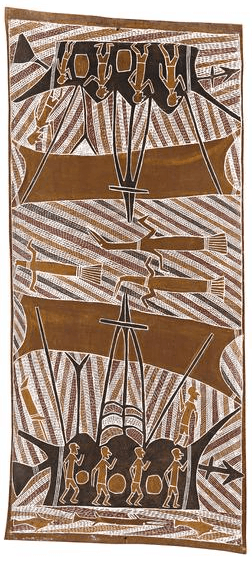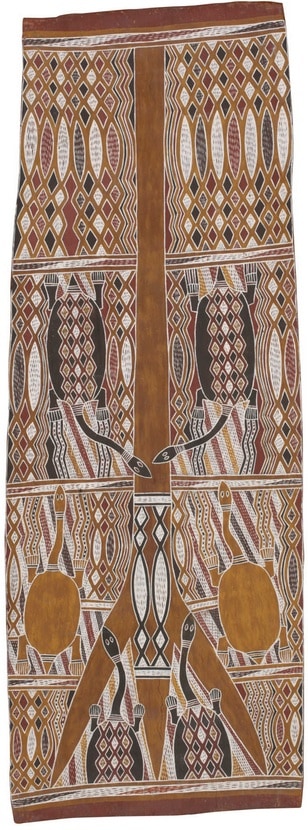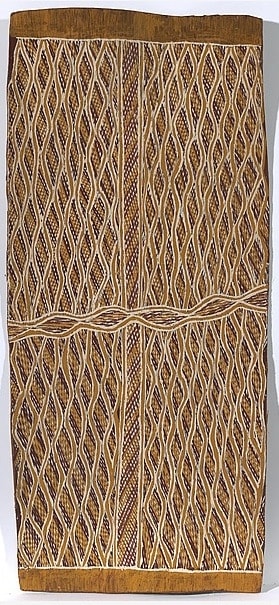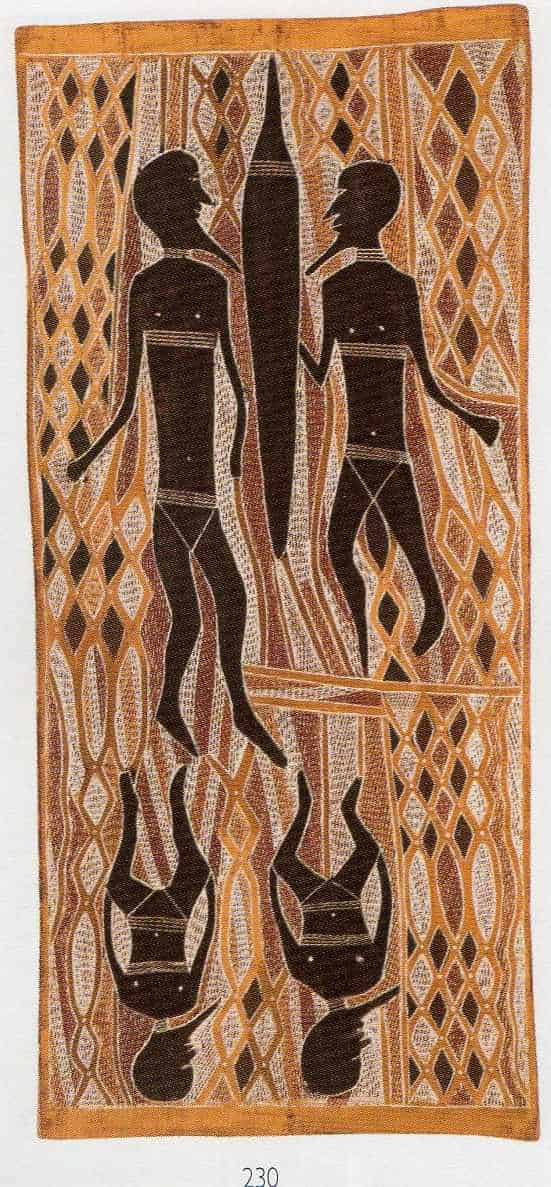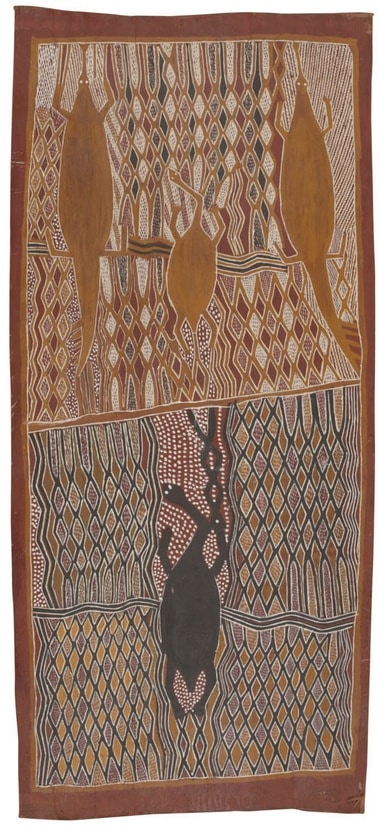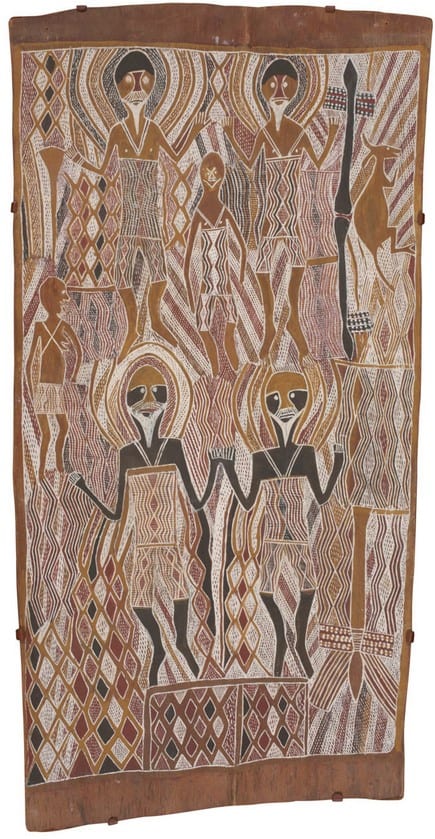Birrikidji Gumana Yirrkala Bark Painter
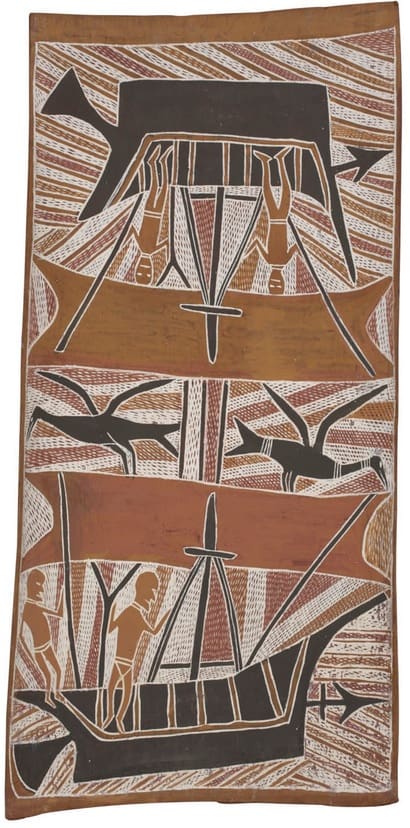
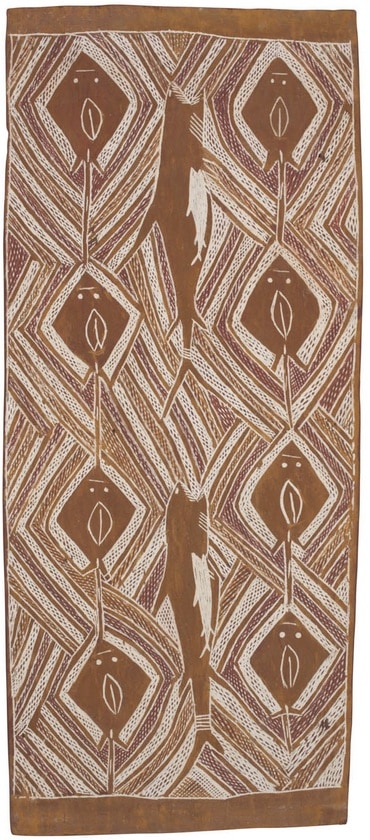
Style
Birrikidji bark paintings often have large monochrome figures or Totemic animals. These figures in panels of painted rarrk. His son Gawirrin has a similar style and the shares the same totemic animals. Birrikidji also painted barks depicting Macassan Prau (sailing vessels). These barks of Prau are often complete with their crews. He also painted several bark paintings of stingrays. These diamond shaped stingrays painted to become part of the rarrk design. This diamond-shaped design is the property of the Dalwangu clan of the Yirritja Moiety and has its own story. The ancestral hero Laintjun came out of the sea in the Dreaming with the seafoam forming the diamond patterns on his body. Laintjun taught the Dalwangu Clan how to paint the diamond pattern and the meaning of them. When Laintjun first arrived from the sea as an ancestral spirit, he assumed a human form. He later searched the Arafura swamp and found and ate the “Sacred Honey Comb” and so became a spirit man. In time he became the greatest warrior and hunter in all Arnhem Land. When he came out of the sea he brought with him all the Yirritja totems and distributed them to all the Yirritja Clans. The diamond pattern represents the sea foam on Laintjun’s body, the Sacred Honeycomb and water rippling through the sticks of the fish trap. Birrikidji Gumana is also known to have carved and painted at least one hardwood Aboriginal Figure.Biography
His birth date is often incorrectly given as 1898, but he was much older than that. He recalled how he had discovered the bodies of the Yolngu killed by a police party at the Gangan massacre that happened around 1911. When the Yirrkala mission station started in 1935 he was already well into middle age. He was a man of enormous authority and a leader of Yirritja moiety ceremonies.
In his early days, he lived with his people around Blue Mud Bay. Birrikitji painted at the newly established missions at Groote Eylandt and Rose River. He moved and settled at Yirrkala in the late 1950s. By this time he the most eminent Yirritja moiety Lore man as well as a noted warrior, dancer, and song man. He painted the lower section of the Yirritja side of the Yirrkala Church Panels.
Other Artists involved in the painting of the church panels include Mathaman and Narritjin and Mithinarri
Birrikidji is sometimes spelled as Birrikidja Gumana, Birrikitji Gumana or even Birrakitja Gumana.
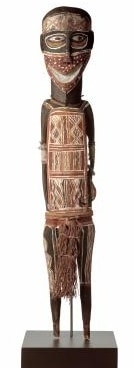
All images in this article are for educational purposes only.
This site may contain copyrighted material the use of which was not specified by the copyright owner.

